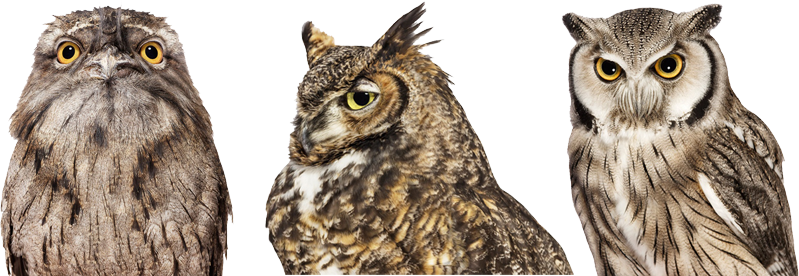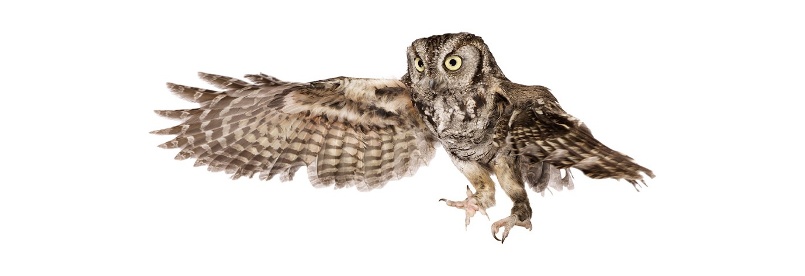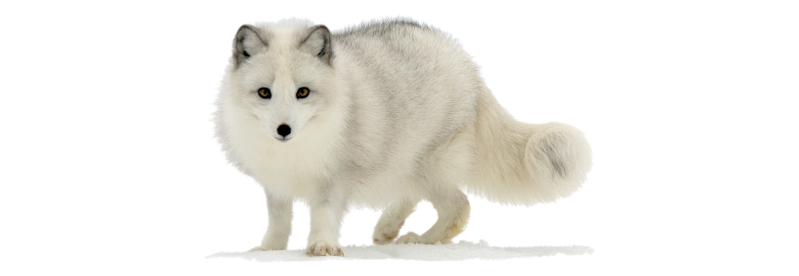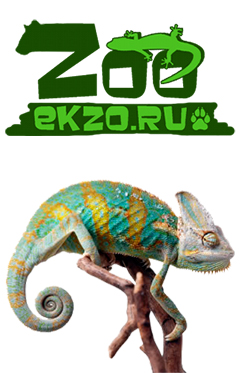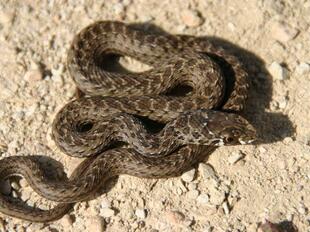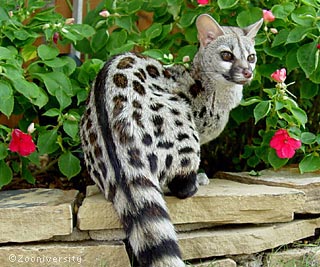
Cape genet, or Blotched genet, or Large-spotted genet, or South African large-spotted genet(Genetta tigrina)
Phylum —chordata
Class — mammalia
Order — carnivora
Family —viverridae
Genus – genetta
Appearance
The Cape genet is ash grey with brown irregular spots and a black stripe along the spine. Its muzzle is white, and it has white spots below the eye. Its ears are grey. Its tail is black and white banded with a black tip. Some individuals living in areas with more than 375 mm (14.8 in) annual precipitation are darker than individuals from drier areas.
Measurements of adult males range from 460 to 580 mm (18 to 23 in) in head and body with a 390 to 459 mm (15.4 to 18.1 in) long tail and a weight of 1.6 to 2.1 kg (3.5 to 4.6 lb). Adult females range from 427 to 560 mm (16.8 to 22.0 in) in head and body with a 385 to 432 mm (15.2 to 17.0 in) long tail and a weight of 1.36 to 1.870 kg (3.00 to 4.12 lb).
It differs from other genets by a short dorsal crest and poorly spotted hind legs, which are dark at the back.
Habitat
Large-spotted genets (Genetta tigrina), are native to southern Africa. They can be found in the extreme northeastern parts of Namibia, in northern and eastern Botswana, and eastern areas of southern Africa including Zimbabwe, Mozambique, Swaziland and Lesotho, and South Africa.
Behavior
Cape genets have been recorded solitary, and mostly at night. During the day, they rest in trees high above the ground. They are both terrestrial and arboreal, but hunt and feed on the ground.
They hiss and growl in stressful situations. Olfactory communication is most likely very important in the life of Cape genets, their social environment and life cycle. When walking on branches, they stay low and laterally swing their legs out so that any misstep is easily correctable.
Diet
Cape genets feed mostly on rodents such as African vlei rats, rock rats, mice and birds. They are considered to be opportunistic omnivores, since they also catch and feed on insects, spiders, scorpions, and scavenge fish on the beach. Eating grass may aid digestion, dislodge hair in the intestines, induce vomiting to get rid of ingested toxins, relieve throat inflammation and stomach irritation.
Reproduction
Cape genets apparently mate during the warm summer months. Pregnant females were observed in September to November. Two young weighed 70 g at birth. A captive breeding pair regularly had litters of two young.
Gestation periods last about 70 days. Females make nests in hollow trees, in holes or among boulders. The young open their eyes 10 days after birth, their canine teeth break through at the age of four weeks. They are weaned at about 2.5 months and hunt on their own when about seven months old.
In captivity
Captive Cape genets live for 15 years.
Your genet should have a huge, secure enclosure at least 4 feet by 8 feet with a height of 6 feet. A gigantic ferret cage is your best option because it already comes with levels to climb on and small bar spacing so the animals can't escape. If a genet can fit its head through something, it can get its whole body out, too.
The pet should only be caged when you are not around. Otherwise, it will need at least three hours of supervised playtime outside of the cage daily.
Being agile jumpers and climbers, they will often jump to high platforms to look around. They need space to run and jump safely.
Most genets are litter box trained. You can provide a small cat litter box with recycled newspaper litter (such as yesterday's news) in the cage. If properly trained, your genet should return to its cage to use its litter box when free in the house.
As an opportunistic feeder, the genet will eat anything it can get its paws on. Genets have similar dietary requirements to felines, including high amounts of taurine amino acids and lower amounts of carbohydrates.
In the wild, small rodents, reptiles, amphibians, and insects are all prey to the genet. In captivity, offer a mixture of grain-free ferret food and high-quality commercial organic food cat food with human-grade ingredients. Feed amounts according to the packaging instructions and the weight of your pet. You can also give fruit, insects, and cooked chicken with the bone still in. Provide fresh water daily in a heavy cat bowl.
Genets often tend to be food aggressive. Feed your pet in its cage to avoid an accidental bite from an animal that feels threatened while eating.
 Russian
Russian
 English
English








